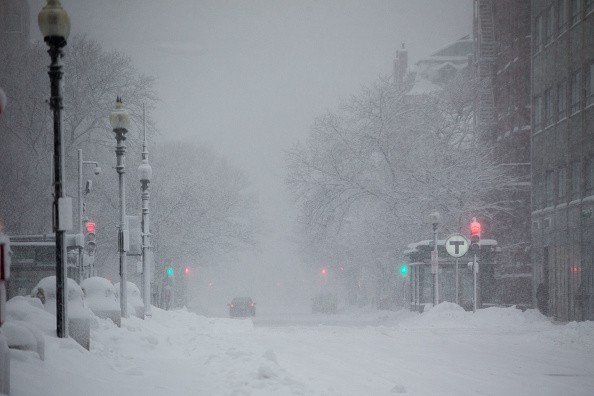Weather alerts via mobile messages are important to remind of tornadoes, storms, hurricanes, snow squalls and other weather events. It becomes life-saving, providing instant messages to motorists, residents and communities.

However, a report said that the National Weather Service (NWS) developed new criteria for notifications of snow squalls based on the public's suggestions after receiving multiple messages from the Wireless Emergency Alert (WEA) notifications.
Snow squall notifications
In the latest weather news on December 7, 2022, AccuWeather reported that the National Weather Service decided to change the number of alerts on snow squall notifications indicating that the weather event must be significant.
The instant and wireless alerts to residents are helpful to early prepare for severe weather conditions and potential evacuations.
AccuWeather explained that NWS could notify of any possible warnings for the weather. They could also send alerts for snow squalls, tornadoes, flash floods and severe thunderstorms.
The alert messages for snow squalls alerts are significantly helpful in anticipating the weather event. Snow squalls could unload heavy snow in cities and communities, which could have an intense and dangerous impact on main roads and communities.
The report added that snow squalls could cause slippery roads and poor road visibility, which could cause road accidents. The snow squalls advisories could help motorists anticipate hazardous travel conditions.
However, the news report explained the public feedback revealed that the National Weather Service's snow squalls warnings had many alerts.
As a result, NWS developed new criteria for snow squalls warnings that reduce the number of notifications.
AccuWeather explained that snow squall warnings could alert a mobile phone when the weather event is considered 'significant.' The report explained that the weather service could indicate a significant tag if the snow squalls could impact major roads (starting between 6:00 a.m. and 10:00 p.m.).
Motorists or residents planning to travel outdoors should take note of snow squall warnings, especially if it could cause dangerous travel conditions.
Meanwhile, AccuWeather added that the warning could appear when the snow squall could emerge on winter advisory or even if there are no winter warnings.
The public suggestions helped the agency devise plans to develop the Wireless Emergency Alert (WEA) system for sending snow squall warnings.
Prepare for snow squalls
The weather agency emphasized the importance of responding to snow squall warnings. The report explained that knowing the weather notifications' potential threat could help motorists prepare for extremely dangerous weather events.
Those traveling outside or when snow squalls unload should drive slowly and safely. You could stop and look for a safe place in the area or drive on roads without snow squall warnings.
Furthermore, stay calm in driving. If you get caught up in the snow squalls, you could call for immediate assistance from local authorities.
If you know there are threats of severe weather conditions and snow squalls, staying home and rescheduling your trip is best.
After your vehicle manages to pass snow squalls, check your car and tires for potential damages.
Related Article : Temperatures in Northern Australia Expected to Soar Due to Heatwaves
For more similar stories, don't forget to follow Nature News.
© 2025 NatureWorldNews.com All rights reserved. Do not reproduce without permission.





